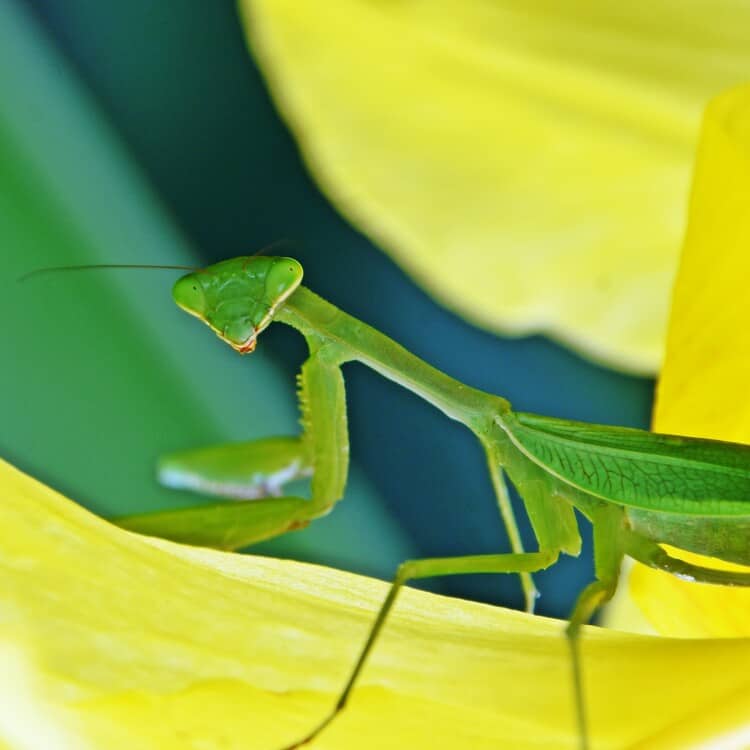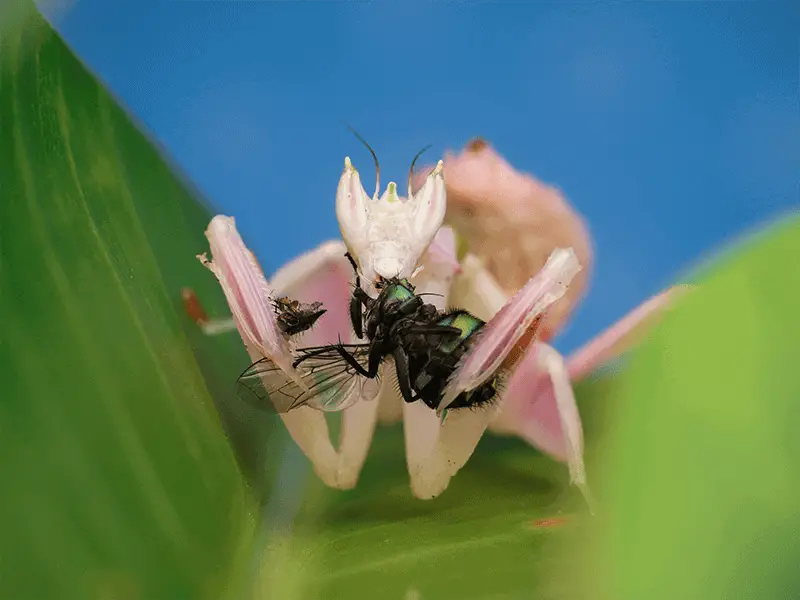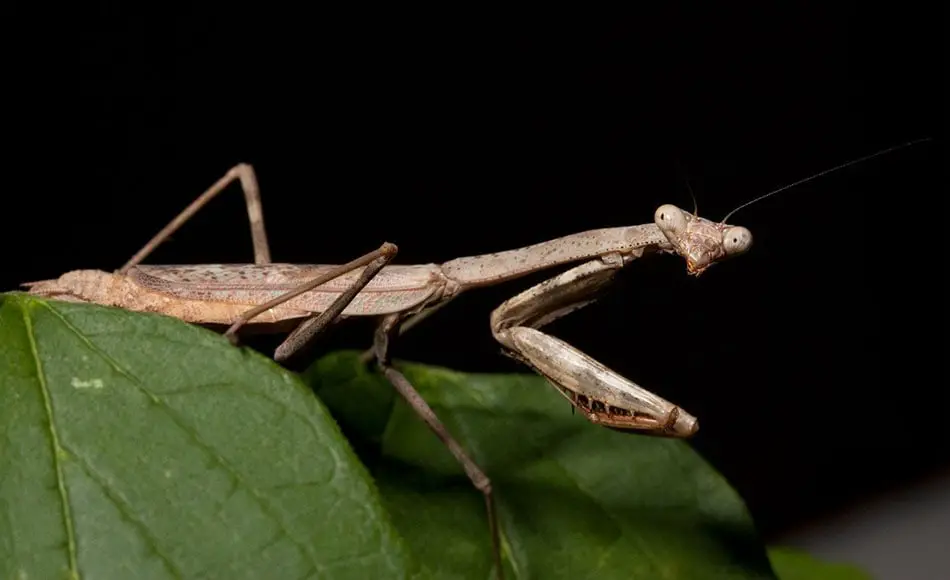Are praying mantis endangered? This question echoes the concerns of nature enthusiasts and conservationists alike. With their unique and captivating presence in the natural world, praying mantises have garnered attention for their distinctive appearance and hunting prowess. However, their survival is subject to various challenges in the face of human activities and environmental changes. In this article, we explore the conservation status of praying mantises and delve into the importance of safeguarding these intriguing creatures to maintain the delicate balance of our ecosystems. We will also answer question “is it illegal to kill praying mantis?”

Are Praying Mantis Endangered?
The enchanting presence of praying mantises in the natural world has sparked curiosity about their conservation status. To answer the question, “Are praying mantises endangered?” we must navigate the intricacies of their existence and consider the varying factors that influence their populations.
Explanation of the varying conservation status based on geographical location:
The conservation status of praying mantises is not uniform across the globe. Different regions may experience different trends in population numbers and species health. While some areas might boast thriving populations of these remarkable insects, others may witness concerning declines that warrant immediate attention.
Factors contributing to the decline of certain species:
Praying mantises face numerous challenges that threaten their survival. Habitat loss due to urban development, agricultural expansion, and deforestation disrupts the ecosystems they depend on for sustenance and shelter. Additionally, the use of pesticides and insecticides intended to control pest populations can inadvertently harm praying mantises and other beneficial insects, further exacerbating the issue.
As we continue to unravel the complexities of praying mantises’ conservation status, we must acknowledge the significance of understanding the specific threats faced by different species and their habitats. By doing so, we can take targeted measures to ensure the preservation of these unique and vital members of our natural world.
Are praying mantis endangered in USA?
Among the vast diversity of over 2,400 mantis species worldwide, none of them are currently classified as endangered in the United States. These captivating insects inhabit various regions across the country, each species adapted to its unique ecological niche. While some localized populations may face challenges due to human activities or habitat alterations, the overall status of praying mantises in the US reflects a relatively stable and healthy presence.
Nonetheless, continuous monitoring and conservation efforts are essential to ensure the long-term well-being of these fascinating creatures and to preserve the delicate balance they bring to the nation’s ecosystems.
Are praying mantis endangered in Europe?
The continent is home to several species of these captivating insects, each adapted to its specific habitat and environmental conditions. While some regions might experience fluctuations in local populations due to various factors like habitat loss or climate changes, no widespread threat to the survival of praying mantises as a whole has been reported.

Why is a Praying Mantis Rare? Understanding Their Abundance
In the intriguing world of praying mantises, diversity reigns supreme. Some species hold an aura of extreme rarity, making them elusive gems that are virtually impossible to obtain from mantis keepers due to their scarcity in both the wild and captivity. These enigmatic species are a true testament to the wonders of nature, capturing the fascination of entomologists and enthusiasts alike. Even in their native habitats, they remain exceedingly scarce, adding an air of mystery to their existence. Many species are not even discovered yet!
Conversely, amidst the rich tapestry of praying mantis diversity, there are other species that enjoy widespread abundance. Flourishing in numerous regions, these mantises are found aplenty both in the wild and among dedicated mantis enthusiasts who raise and care for them in captivity. These common species present a captivating contrast to their rare counterparts, showcasing the astounding variety that exists within the world of praying mantises. Such diversity serves as a constant reminder of the need for responsible conservation efforts to safeguard the future of these remarkable insects and to preserve the delicate balance of their ecosystems.
Is it illegal to kill praying mantis?
Unlike some other protected species, praying mantises often lack specific wildlife conservation laws in many regions. Their status as charismatic insects and their abundance in certain areas might lead to the assumption that they are not in need of legal protection. However, this lack of formal safeguards does not diminish the significance of these fascinating creatures in maintaining ecological balance and biodiversity.
Advocating for Ethical Treatment and Respect for All Living Beings
Although praying mantises may not be explicitly protected by law, there is a growing call for ethical treatment and respect for all living beings, including these captivating insects. Environmental awareness and conservation consciousness underscore the importance of coexisting with nature and appreciating the value that each species brings to the ecosystem. Educating the public about the importance of preserving praying mantises and treating them with compassion fosters a sense of responsibility towards the natural world.
Potential Consequences of Disrupting the Ecosystem
Every living organism, no matter how small, plays a vital role in the intricate web of life. Praying mantises are no exception. Indiscriminate killing or disrupting their populations can have unintended consequences, creating imbalances in the ecosystem. As skilled predators, praying mantises help regulate insect populations, preventing pest outbreaks, and supporting the health of plants and crops. Removing them from the environment disrupts the delicate checks and balances that nature relies on to maintain ecological harmony.

Conclusion
In conclusion, while no species of praying mantis is currently endangered in both the United States and Europe, their conservation status remains a topic of interest. The subjectivity of rarity underscores the need for monitoring their populations, understanding their significance in the ecosystem. Advocating for ethical treatment and respecting all living beings, including praying mantises, fosters responsible environmental stewardship.
Embracing coexistence with nature and preserving the rich diversity of these remarkable insects is essential to ensure a sustainable future and maintain the delicate balance of our ecosystems. Let us work together to protect and appreciate the captivating world of praying mantises, cherishing their beauty and the vital role they play in our natural world.
If you found this article interesting, don’t hesitate to share it on social media!
May interest you
Mystical World of the insects: Praying Mantis Spiritual Meaning
In this article, we embark on a journey to delve into praying mantis spiritual meaning, uncovering its symbolic significance and exploring its presence in art, mythology, and spiritual practices. The…
Can praying mantis fly? The aerial secrets of mantids
Can you pick up a praying mantis? How to hold it?
Rest or Roam? The Fascinating Question: Do Praying Mantis Sleep?
As we delve into the fascinating world of praying mantis, we find ourselves pondering a curious question: do praying mantis sleep? If so, how do praying mantis sleep? Like many…